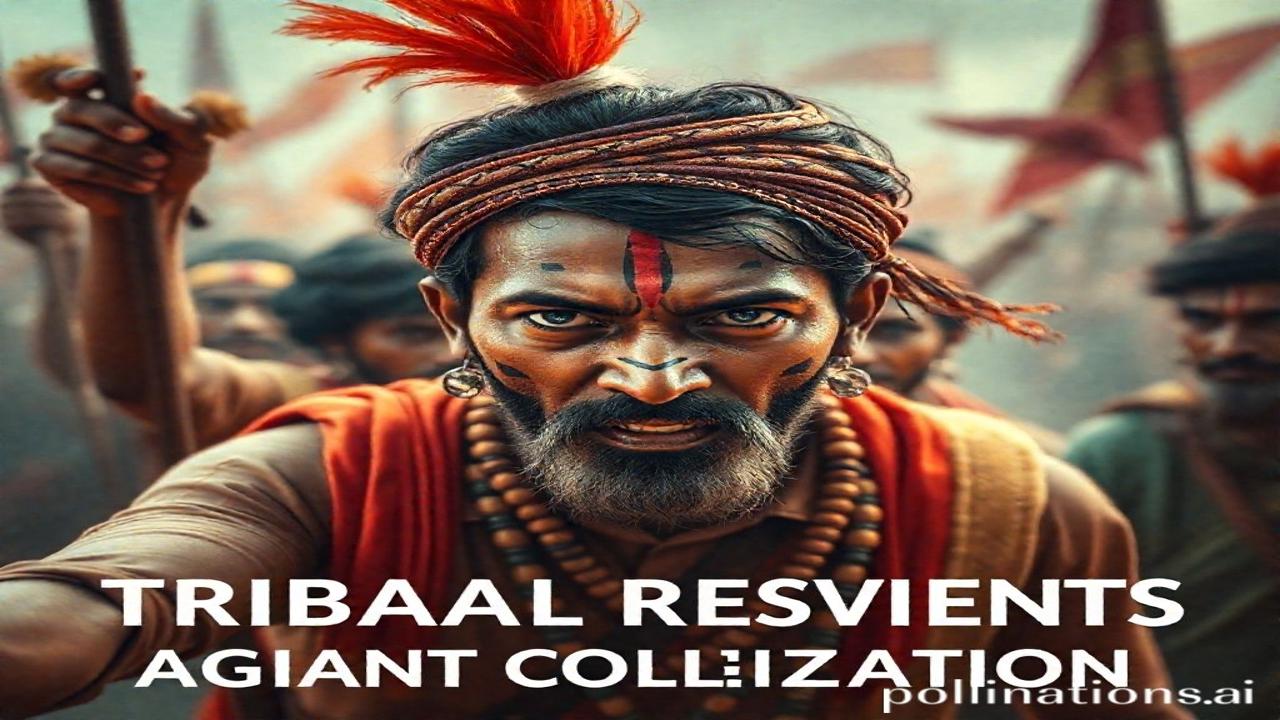Waqt Ki Dhool Mein Dabi Ek Cheekh: Tribal Resistance Movements Against Colonization
Kabhi kabhi, aadhi raat ko, mujhe aisa lagta hai jaise main jharokhe se jhaank raha hoon… ek aisi duniya mein jahan jungle aabad the, jahan azaadi ki cheekh hawa mein gunjti thi. Aisi cheekh jo aaj bhi, shayad, patte hilne se, nadiyon ke shor se, apne hone ka ehsaas dilati hai. Yeh cheekh hai Bharat ke un tribals ki, jinhone colonization ke khilaaf apni jaan ki baazi laga di. Woh, jinhe hum aksar bhool jate hain…par unki kahani hamari mitti mein, hamare dil mein hamesha zinda rahegi.
अंग्रेजों का आगमन और आदिवासी जीवन: Ek Jhankaar, Ek Vaada
What is this? Tribal Resistance Movements against Colonization in India. Basically, it’s about various uprisings by tribal communities against British rule, largely driven by the British encroaching on their land, forests, and cultural practices.
When and where did it happen or originate? From the late 18th century right up to India’s independence in 1947, scattered across the country, especially in regions like Jharkhand, Odisha, Madhya Pradesh, and the Northeast.
Why is it important in our history or culture? These movements highlight the courage, resilience, and deep connection these communities had with their land. They remind us that “freedom” wasn’t just a slogan for the elite; it was a desperate need for survival and cultural preservation for the tribals. They also show that “Bharatiyata,” or Indianness, is not a homogenous concept but a mosaic of diverse cultures and struggles.
Dates to remember: Santhal Rebellion (1855-56), Munda Rebellion (1899-1900), and many more! Lesser-known fact: Did you know that many tribal revolts were inspired by prophecies and religious leaders who promised to restore their lost world?
Zameeni Sach: Jungle Ke Sher, Mitti Ke Bete
Imagine, for a moment, living in a dense forest. Your life revolves around the rhythms of nature. You hunt, you gather, you worship the spirits of the trees and rivers. Then, suddenly, gore sahibs arrive with their maps, their laws, and their insatiable hunger for land and resources.
Ma Rukmini, ek Santhal mahila, subah uth kar apne bachchon ke liye jangal se phal aur jadibutiya le aati hai. Uske pati, Birsa, ek dhangar (labourer) ke roop mein kaam karta hai, kyonki unki zameen ab sahebon ki ho gayi hai. Unke gaon mein, dhol ki aawaz kam ho gayi hai, kyunki dar hai ki angrez unke tyohar ko mana karne aa sakte hain.
“Kaise jiyege hum, Birsa?” Rukmini poochti hai. “Jangal hamara ghar hai, aur yeh log humse woh bhi chheen rahe hain.”
Birsa, apne logon ki aankhon mein dukh aur gusse ko dekhta hai. Uska dil ek hi jawab deta hai: “Ladenge.”
Rulers, artisans, farmers, warriors – everyone played a role. Some led armed rebellions, like Birsa Munda, who became a legendary figure. Others used non-violent resistance, refusing to cooperate with the British. The tools were simple: bows and arrows, axes, and the unwavering belief in their rights. Clothes were made of locally spun cotton or forest materials. Their dreams? To live in peace and dignity, to protect their land and culture. Their fears? Starvation, displacement, and the loss of their identity.
Dharohar aur Pehchan: Aaj Bhi Goonjti Hai Jungle Ki Awaaz
Today, we see echoes of these movements in various aspects of Indian life. Many tribal communities continue to fight for their land rights and cultural preservation. We see their influence in folk art, music, and dance forms. The spirit of “Jal, Jangal, Jameen” (Water, Forest, Land) still resonates in environmental movements across the country.
The Constitution of India recognizes the rights of tribal communities, but the struggle for their empowerment continues. Understanding their history, their sacrifices, is crucial to building a truly inclusive and just society.
Mazedaar Tathya aur Bhram-Bhanjak: Facts That Might Surprise You
-
Myth: Tribal resistance was always violent.
Fact: While armed struggles were common, many movements also employed non-violent methods like refusing to pay taxes or boycotting British goods. -
Shocking Truth: The British often exploited existing caste and social hierarchies to divide and rule tribal communities, making resistance even more challenging.
Drishya aur Bhavnaen: Smells, Sounds, and Sensations of Rebellion
Imagine the smell of wood smoke mingling with the earthy scent of rain-soaked forests. Hear the rhythmic beat of drums echoing through the hills, calling people to gather. Feel the rough texture of handwoven cloth against your skin, a symbol of self-reliance. Taste the bitterness of hunger and the sweetness of mahua wine shared among comrades. The air crackled with tension and determination.
Antim Vichar ya Uddharan: A Silent Song
In the depths of those forests, a silent song still lingers. A song of defiance, a song of love for the land, a song of unwavering spirit. It’s a song that reminds us that the fight for justice and dignity is never truly over.
“Sarfaroshi ki tamanna ab hamare dil mein hai,
Dekhna hai zor kitna baazu-e-qaatil mein hai.”
This poem encapsulates the spirit of resistance, not just of the freedom fighters, but also the tribal communities who fought to preserve their way of life. Their stories are a testament to the enduring strength of the human spirit.
